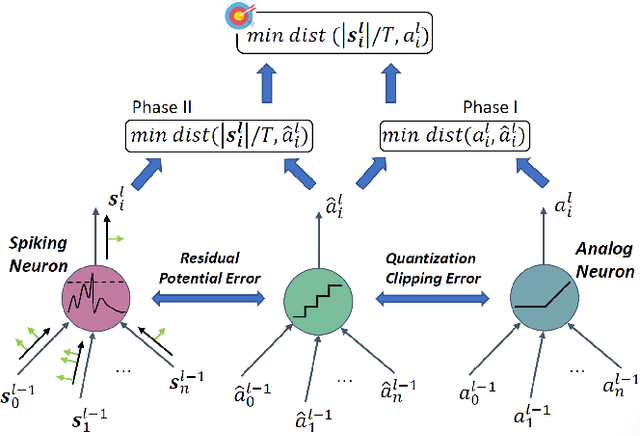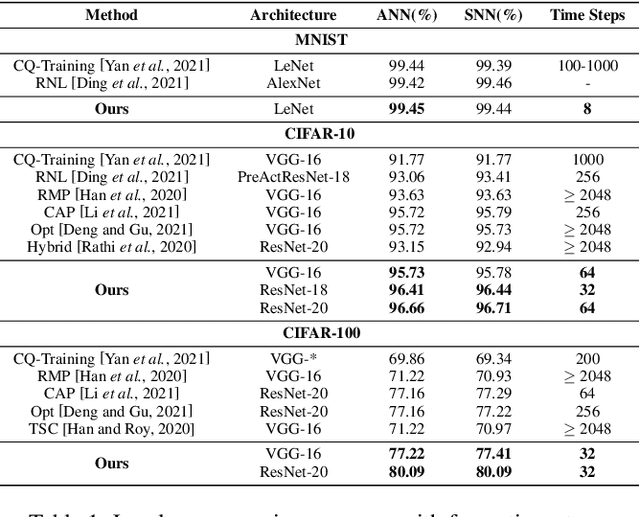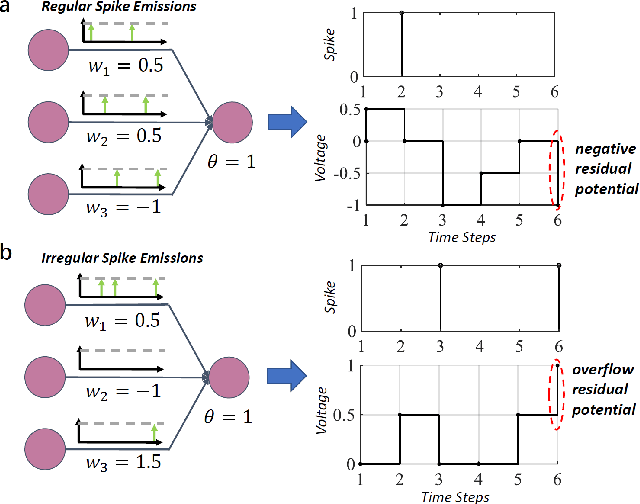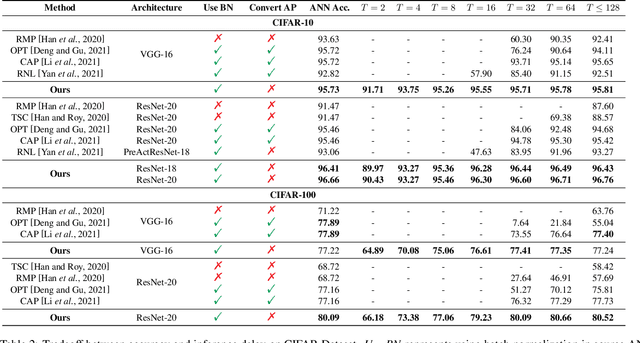Shuang Lian
Towards Lossless ANN-SNN Conversion under Ultra-Low Latency with Dual-Phase Optimization
May 16, 2022



Abstract:Spiking neural network (SNN) operating with asynchronous discrete events shows higher energy efficiency. A popular approach to implement deep SNNs is ANN-SNN conversion combining both efficient training in ANNs and efficient inference in SNNs. However, the previous works mostly required thousands of time steps to achieve lossless conversion. In this paper, we first identify the underlying cause, i.e., misrepresentation of the negative or overflow residual membrane potential in SNNs. Furthermore, we systematically analyze the conversion error between SNNs and ANNs, and then decompose it into three folds: quantization error, clipping error, and residual membrane potential representation error. With such insights, we propose a dual-phase conversion algorithm to minimize those errors. As a result, our model achieves SOTA in both accuracy and accuracy-delay tradeoff with deep architectures (ResNet and VGG net). Specifically, we report SOTA accuracy within 16$\times$ speedup compared with the latest results. Meanwhile, lossless conversion is performed with at least 2$\times$ faster reasoning performance.
 Add to Chrome
Add to Chrome Add to Firefox
Add to Firefox Add to Edge
Add to Edge